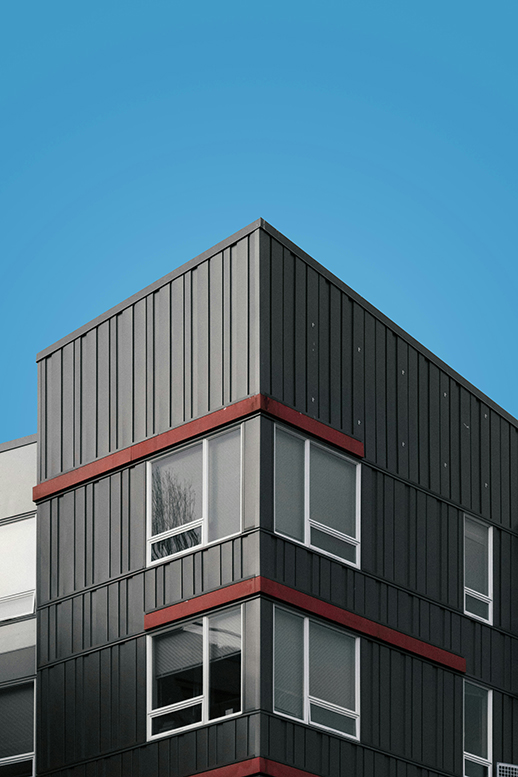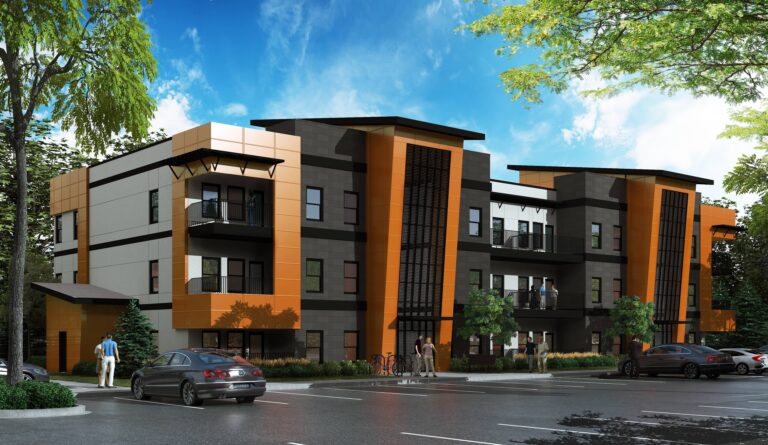The benefits of this construction technique and the hurdles preventing broad adoption.
Source: “Is Modular the Best Solution to Multifamily’s Big Supply Problem?” by Jordana Rothberg for Multi-Housing News
Modular design and construction has been around for decades, yet evaluating its long-term viability for multifamily is complex. Some indicators suggest that modular is steadily gaining traction in the sector. According to the most recent data from the Modular Building Institute, multifamily accounted for about one-third of modular factory output in 2022, up from 21 percent in 2020.
Major multifamily developers are ramping up their participation in the sector. Last summer Greystar broke ground on Ltd. Spring Run, the first modular project with components fabricated by its Modern Living Solutions affiliate. Located in Coraopolis, a Pittsburgh suburb, the 312-unit project is scheduled to receive its first units this June.
Modular construction has the potential to make a major contribution to addressing the housing shortage in an efficient, cost-effective way. Yet many observers say it still has a long way to go before reaching that point. “Modular housing is supposed to be more efficient and save anywhere from 20 percent to 50 percent, reduce costs and reduce timelines,” Barry LePatner, founder of LePatner & Associates, told Multi-Housing News. “But as a whole in the U.S., it has had a less-than-stellar takeoff over the last five, 10, 15 years.”
Modular homes account for the biggest share of the prefab segment, but not all prefab homes are modular. For the purposes of this discussion, modular housing refers to a volumetric modular building which is built in an off-site factory, transported to the site and often craned into position.
“In order to deliver more housing and more affordable housing, we need to figure out how to decrease the cost and decrease the time spent per … construction,” said Dan Hnatkovskyy, CEO of NewHomesMate. “Historically, at least in the past 20 years, modular housing was the best solution to this problem.”
Hnatkovskyy noted that 25 to 30 percent of all single-family homes delivered are currently modular. For multifamily developments, the percentage is significant but much lower. Modular construction can offer plenty of value to multifamily developers. Yet some observers believe that the upsides have yet to outweigh traditional building techniques.
“When you think about modular, usually what people conjure in their mind is the idea of big boxes being built in a factory and then craned into position on site and presto, you have an apartment building,” Neil Rubler, founder and CEO of Vessel Technologies, said. “There are advantages to doing things that way, although we feel the disadvantages outweigh the advantages.”

Assessing the upside
Considering the housing supply gap, and especially the shortage of affordable product, creating standardized multifamily units as well as single-family homes in a factory setting has significant upside when it’s properly executed. “You can exercise all sorts of planning control, you can hold yourself to very high standards of quality and precision,” yet still have room for creativity, Rubler noted.
Comparing modular to manufactured homes offers a useful perspective. In general, Hnatkovskyy told MHN, “Modular is definitely a lot better product because it is a lot more customizable.” And while modular homes can cost around 15 percent to 20 percent more than a purely manufactured home, the opportunity for customization is a key selling point for residents.
Unique details are also much easier to achieve in modular than in manufactured housing. As an added benefit, “Modular homes tend to retain resale value very similarly to traditional homes,” Hnatkovskyy continued. “While, if we talk about manufactured homes, they depreciate a lot faster.” Modular building methods can be more sustainable than conventional construction. Due to their factory production setting, modular homes cut back on the massive amount of construction waste that accumulates over the course of a traditional build.
“There are plenty of arguments to be made that that the production of housing can and should be standardized, and the modular movement is very much a step in that direction,” Rubler said.
Serious pitfalls
While it’s widely accepted that modular housing offers a foundation for a major shift in design, major drawbacks have yet to be ironed out. Topping the list are transportation, materials and workflow between manufacturer and subcontractors.
“Advanced technology has not seeped into the design and construction world,” LePatner said. “Modular housing is an excellent step forward to designing, building and trying to control the completed project, but we haven’t bifurcated.”
He argues that two distinct parts of modular housing have yet to work effectively in unison: the technology of what is fabricated and assembled in the factory and the site where the contractor must ensure that the fitted product is compatible with the prefabricated units.
Every multifamily modular build requires a preparatory on-site set up for functions such as electrical, plumbing, heating and foundation supports. In case of human error, either at the factory or at the construction site, it is not infrequent that the modular units do not fit perfectly with the completed preparatory work on the property.
“This is what causes a great deal of confusion” and difficulty for people working in traditional housing construction, LePatner said. And when errors occur, no one involved—the modular unit producer, the owner or subcontractors—want to take full responsibility for the process, he added.
Moreover, many issues that can come up with modular housing start before the home gets to the site. Modular housing units need to be structurally sound enough to endure the elements during transportation and withstand forces while it is put into position. Rubler told MHN that this means each modular unit must have both a ceiling and a floor, as opposed to conventional multifamily designs that employ a single layer between levels. That redundancy increases the use of construction materials and adds to costs.
Once the modular design is completed, another challenge arises: transportation. Modular units need to be shipped by truck, and often travel by highway on lanes that are about 12 feet wide. Yet because apartment unit dimensions usually extend beyond 12 feet, that poses logistical issues. Trucking costs—fuel, weatherproofing material, insurance among them—are often enough to price builders out of modular entirely, Rubler said.
“To execute the entirety of that ballet that I described is incredibly complicated and expensive,” Rubler said. “I think when people do the math these days on modular construction, generally the conclusion is that you don’t really save money in the building of the building, you save time. Time is money, so there are savings to be had there, but I think we could do so much better.”
Barriers to entry
Wider adoption of modular methods faces other hurdles. LePatner told MHN that many traditional multifamily participants have yet to realize what modular construction brings to the field and are taking a step back. Considering the amount of time, education—and often, money—that it would take to adopt modular processes, many developers and investors have yet to buy in. “More importantly, there is a lack of understanding from banks who tend to be a bit leery about financing,” he added.
That hesitation adds to the industry’s challenges of making large strides in modular. Beyond the difficulty of getting capital investment to fund the development and engineering into research, it’s often difficult to secure the capital to incorporate modular in multifamily projects. For many, the risk is too great to even begin seeking out the reward.
For a development that may call for an investment in the hundreds of millions, “The idea of adopting an innovative approach can be seen as risky,” Rubler said. “As a result … a lot of builders go with the tried and true.”
Next steps
Modular housing offers a step in the right direction toward increasing housing availability and promoting housing affordability. Still, it appears to have a long way to go before it reaches its full potential, and opinions vary widely as to whether modular is the ideal form of prefabrication.
“I think that we are too early in the pursuit of modular as an alternative to know whether ultimately it will be successful,” Rubler said. “I just don’t think that it is the optimal prefabrication strategy. I do think that there are more companies these days starting to think about alternative approaches to prefabrication.”
The demand for expanded affordable options is “the leading factor of why we need to figure out how we can actually prioritize decreasing costs as well as delivery time” and other related issues, said Hnatkovskyy
A key step in advancing modular would be expanding the number of companies that provide modular products, which would produce greater competition and significantly cut delivery costs, Hnatkovskyy noted. As transportation costs decrease, the building process becomes more efficient and the emergence of new materials points to increased potential for modular method, modular has the potential to become an even more attractive option.
Once all these pieces fall into place, Hnatkovskyy is confident that the future looks bright: “It will help us deliver a lot more units and potentially be a really good solution to the housing shortage and affordability crisis,” he said.



